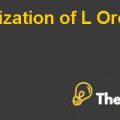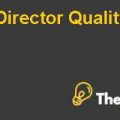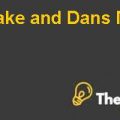BED BATH AND BEYOND- CAPITAL STRUCTURING Case Study Solution
Business memo
Bed bath and beyond is a chain of reputed retail stores that, work under a different name in the US. The macro environment of the company is very challenging and tough, but still the company has performed well and has shown revenue growth of 22% in 2003, and 32% growth in profits. The company has managed to work exceptionally well, during the previous years and work as a whole equity financed company. The company did not obtain any long-term loan to finance their operations or to expand their business. During 2003, the company has acquired many outlets solely on a cash basis.
The company has sufficient cash reserves to finance their activities, despite the fact that company has performed well during the previous years without obtaining any kind of debt .Thecompany is now considering to expand their operations and focus on obtaining some debt, to finance their new projects. The performance of the company is good and the company is financing their activities, by the cash reserves present at the company. Capital rationing planners are now considering to obtain some debt, in order to fix the deterioration of EPS.That the company is facing, by continuously employing their cash reserves on financing.
Findings:
The analysis provided in the excel sheet, is based on the initial investment of the company. The initial investment that the company has planned, is to open 57 outlets by using lease payment structure. The initial outlay of inventory is taken in the calculation of NPV,for the project of opening 57 outlets.
The company has planned to open 80 plus outlets during the year. The initial step was taken to open 57 outlets, the capital expenditure involved and the expenses that were incurred, are incorporated in the calculations to obtain the results. The revenue was taken based on the average revenue of 575 outlets, currently operating in the company.
In the analysis, the Perform a figures are also considered for the purpose of calculating WACC, by both the techniques i.e. by taking into account the portion of debt, if the company would obtain 40% debt and make their combination 60-40 for debt and equity.
The results as per the calculations indicates (based on the initial investment of 57 outlets), the company’s EPS will get better, if the company goes forward by obtaining debt.Furthermore, the NPV calculated based on WACC that is 9% in case of the existing scenario and 6% in case of leveraging the company with 40% debt. The assumptions taken of lease payments and other expenses are showed as given in the case. The result shows positive NPV by both the scenarios.
The NPV calculated after incorporating debt portion, is more than the NPV without leveraging the company. The positive NPV shows the feasibility of the project and the greater value of NPV shows that, the company should go for obtaining debt for the project planned.
BED BATH AND BEYOND- CAPITAL STRUCTURING Harvard Case Solution & Analysis
Recommendation:
Hence, according to the sensitivity analysis and the values calculated.It can be said that, company shall continue to expand their operations by levering their company up to the 40%, but not more than that, because of the risk factor involved.Since, the company is entering to obtain debt for the first time, they should go for debt financing, but considerably up to 40%. Further requirements of capital shall be financed, by using company’s cash reserves i.e. 400 million$ that are already available with the company, to make the composition of capital more reasonable. It will improve the EPS, as well and provides the company an opportunity to grow......................
This is just a sample partial case solution. Please place the order on the website to order your own originally done case solution










